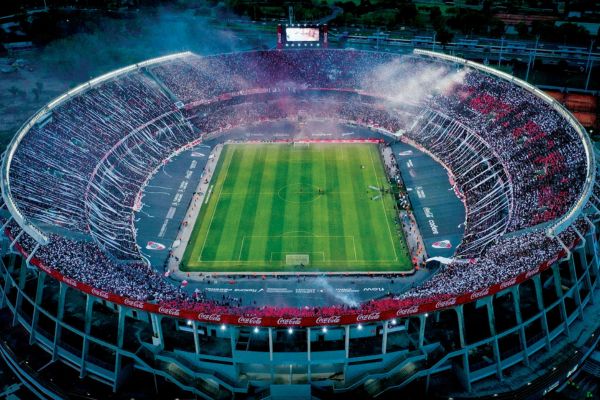Pity Martínez was sprinting towards the halfway line, the ball rolling just ahead of him. No defenders, no goalkeeper, just an open net and thousands of emotional fans watching from behind it. With one touch, then another, he guided the ball over the line and into the back of the net. Moments later, he was off celebrating, his River Plate teammates running toward him. That goal sealed River’s victory in the 2018 Copa Libertadores Final against their fiercest rivals, Boca Juniors.
But here’s what made it even more surreal: this wasn’t Buenos Aires. It wasn’t even South America. This final, the biggest game in South American club football, was played 10,000 km away in Madrid, at one of Europe’s most iconic stadiums, the Santiago Bernabéu, home of Real Madrid.
That match gave the Bernabéu a distinction no other stadium in the world can claim. It became the only stadium to host both a European Championship Final and a Copa Libertadores Final.
A Stadium Built for Big Finals
Beyond being Real Madrid’s fortress, the Bernabéu has hosted three European Cup (now Champions League) finals. Ironically, despite Real Madrid’s dominance in the competition, they have never played in a final at their own ground.
But how did two South American clubs end up playing their biggest game in Madrid?
Chaos in Buenos Aires: How the Libertadores Final Moved to Madrid
Back in 2018, the Copa Libertadores final was played over two legs—home and away. Boca Juniors hosted the first leg at La Bombonera on November 11th. The build-up was intense, with the entire country gripped by final fever. The match itself didn’t disappoint. Boca took the lead twice, but River fought back each time to secure a 2-2 draw, setting up an all-or-nothing return leg at River Plate’s Monumental Stadium.

The hype only grew in the weeks leading up to the second leg on November 24th. Boca fans packed their stadium for send-off events, fuelling the passion of their players. But as the Boca team bus made its way to the Monumental, chaos erupted. River Plate fans attacked the bus, throwing bottles and other objects, shattering windows and injuring players. Police intervention, including the use of pepper spray, only made things worse. Boca players were left physically and emotionally shaken as they rushed inside the stadium.
As the situation escalated, it became clear that the game couldn’t go ahead. After much debate over when and where to replay the final, CONMEBOL (South America’s football governing body) made an unprecedented decision—it would be played in Madrid, at the Santiago Bernabéu.

On December 9th, in front of thousands of traveling fans and curious neutrals, River Plate triumphed 3-1, lifting the Libertadores trophy in the unlikeliest of places.
A Record That May Never Be Matched
This may remain the only time a club final from one continent was played in another, making the Bernabéu’s status even more unique. Since then, CONMEBOL has changed the format, with the Copa Libertadores Final now played at a neutral venue in a single match. While Boca and River could meet again in future finals, it’s unlikely they’ll have to fly 10,000 km to settle it.
But here’s something even more impressive—the Bernabéu isn’t just the only stadium to host a European Championship Final and a Copa Libertadores Final. It has also hosted a World Cup Final and a European Cup Final, further cementing its legendary status.
No other stadium in football history can match that.
If you're interested in more unique football achievements, don’t miss our article on Chelsea’s historic double, winning both the Champions League and Europa League titles simultaneously.
